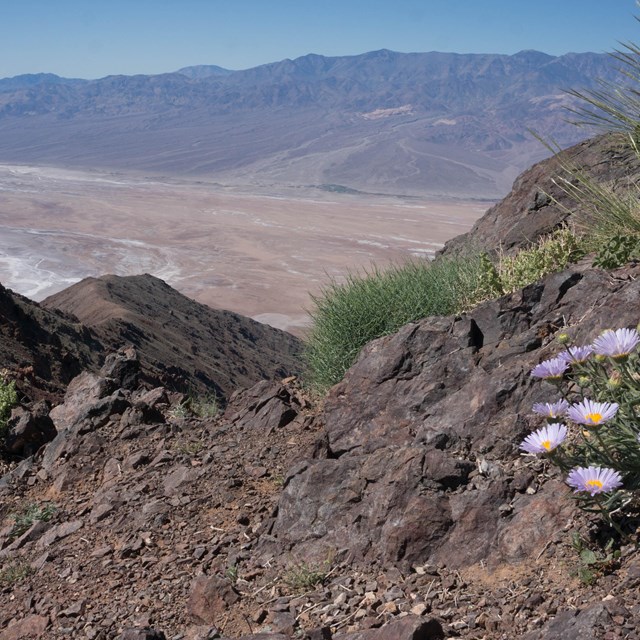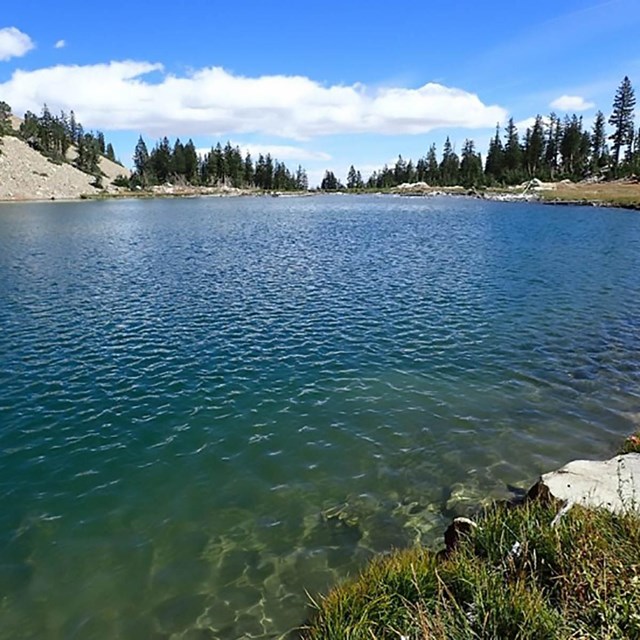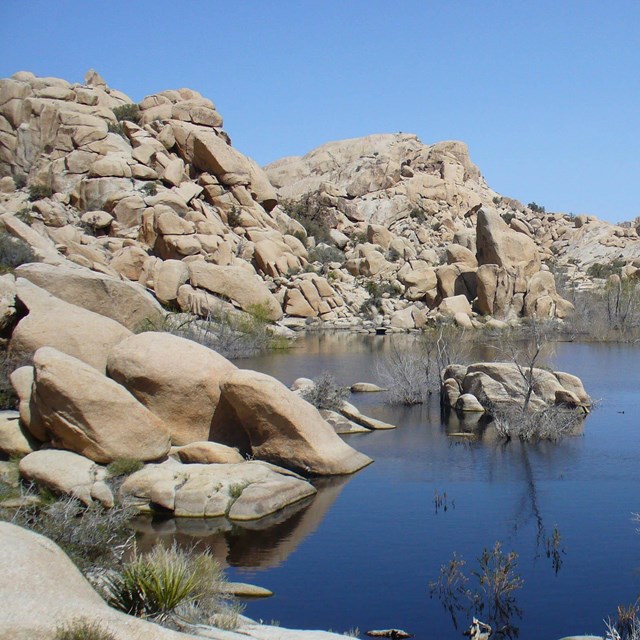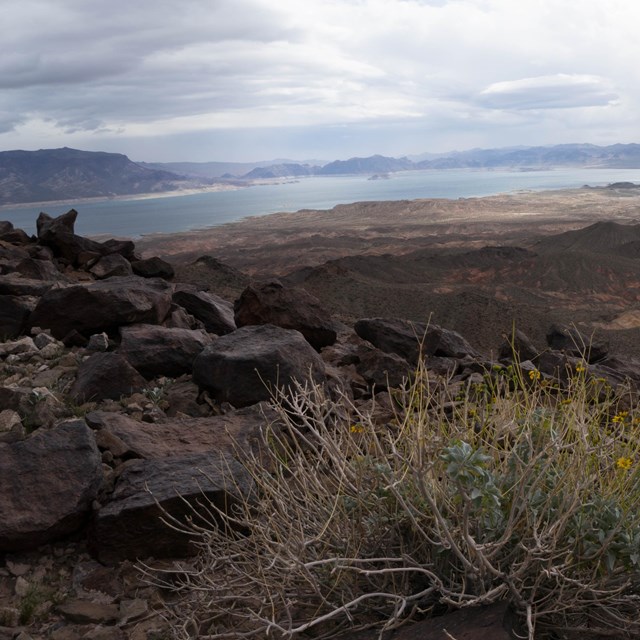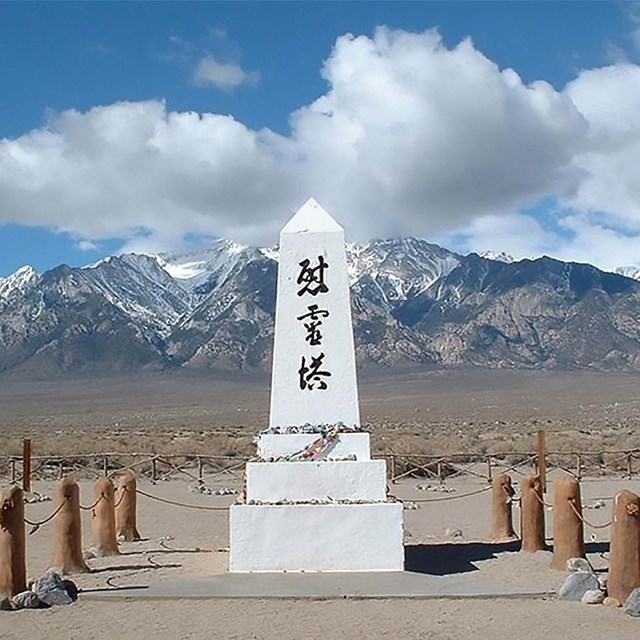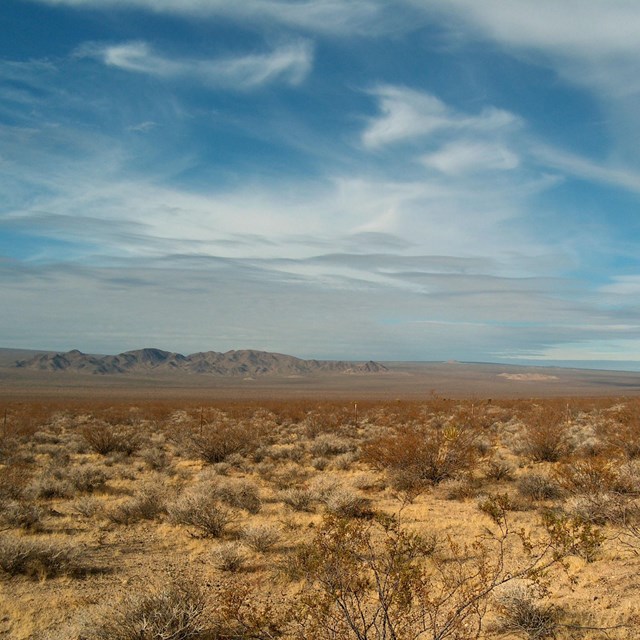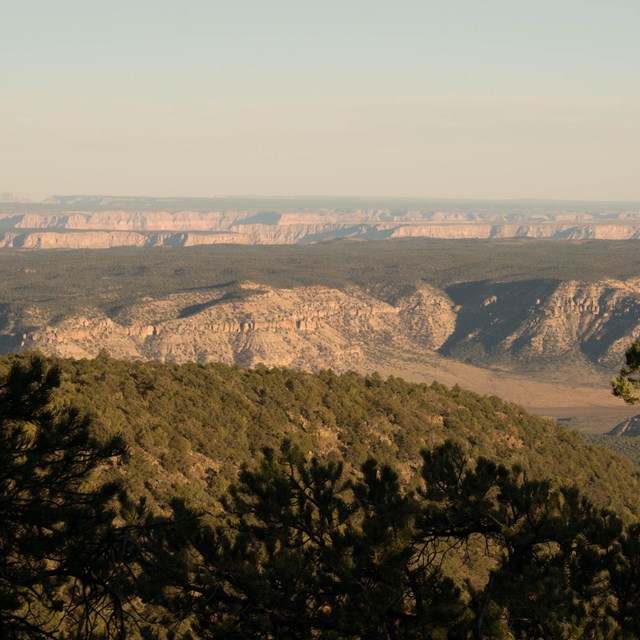We collect and analyze data about park natural resource conditions—taking inventory of park species and natural features such as springs and streams, and monitoring changes in these valuable resources over time. To accomplish this work, we also partner with a variety of federal and state agencies, organizations, and universities.
Network Parks
Across these seven park units, we monitor the health and quality of five different vegetation communities, six subalpine lakes, nine streams, two wells, and a large diversity of spring types including rheocrine, limnocrene, oases, and seeps.
To learn more about the work we do within a specific park, choose from the photos below.
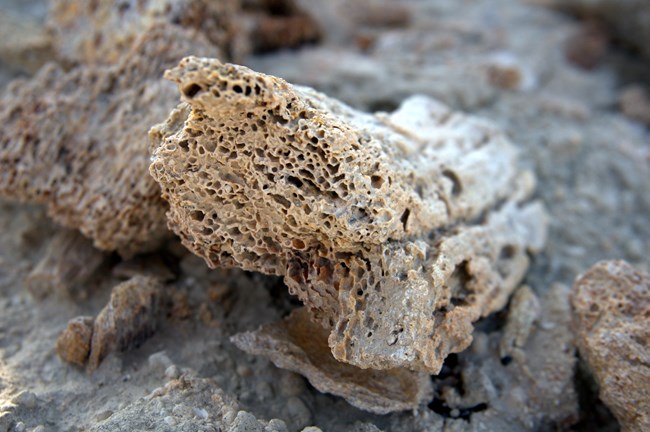
NPS Photo
Tule Springs Fossil Beds National Monument was established as the 405th unit of the National Park Service on December 19th, 2014 in order to "conserve, protect, interpret and enhance for the benefit of present and future generations the unique and nationally important paleontological, scientific, educational and recreational resources and values of the land."
Because Tule Springs is a newly established park unit, the network will be working closely with the park to determine the vegetation and soils monitoring needs that will best aid and inform park management in the preservation of the natural resources. Tule Springs has no springs or wells, so we will not be conducting water monitoring at the park.
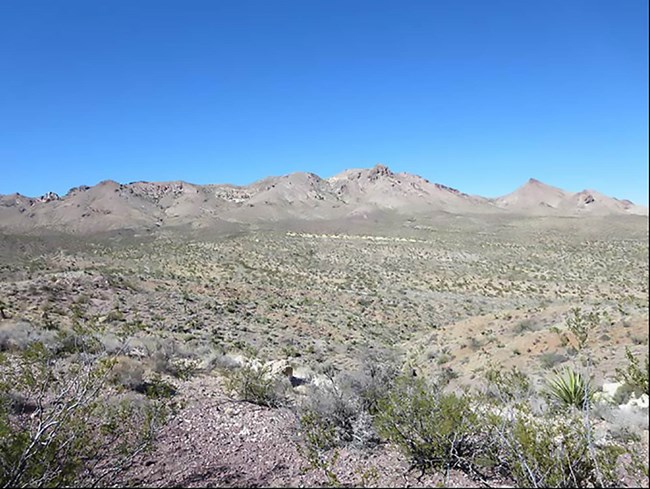
NPS Photo
Castle Mountains National Monument was established as a unit of the National Park Service on February 12th, 2016.
Nestled between the Nevada state line and Mojave National Preserve, the nearly 21,000 acres of Castle Mountains boasts Joshua tree forests, unbroken natural landscapes, rare desert grasslands, and rich human history.
Because Castle Mountains is a newly established park unit, the network will be working closely with the park at a later time to determine the monitoring needs that will best aid and inform park management in the preservation of the natural resources. Management of Castle Mountains is currently integrated into Mojave National Preserve.
Network Partners
The Mojave Desert Network partners with a variety of federal, state, and local agencies and universities in order to carry out our monitoring efforts.
Current collaborations and partnerships include:
Bat Conservation International
California Department of Fish and Wildlife
California Native Plant Society
Conservation Legacy
Desert Research Institute
Great Basin Institute
Nevada Department of Wildlife
Northern Arizona University
Oregon Statue University, Cooperative Chemical Analytical Laboratory (CCAL)
Sweeney Granite Mountains Research Center
U.S. Geological Survey
U.S. Fish & Wildlife Service
Utah State University, National Aquatic Monitoring Center (NAMC)
Last updated: September 20, 2022

